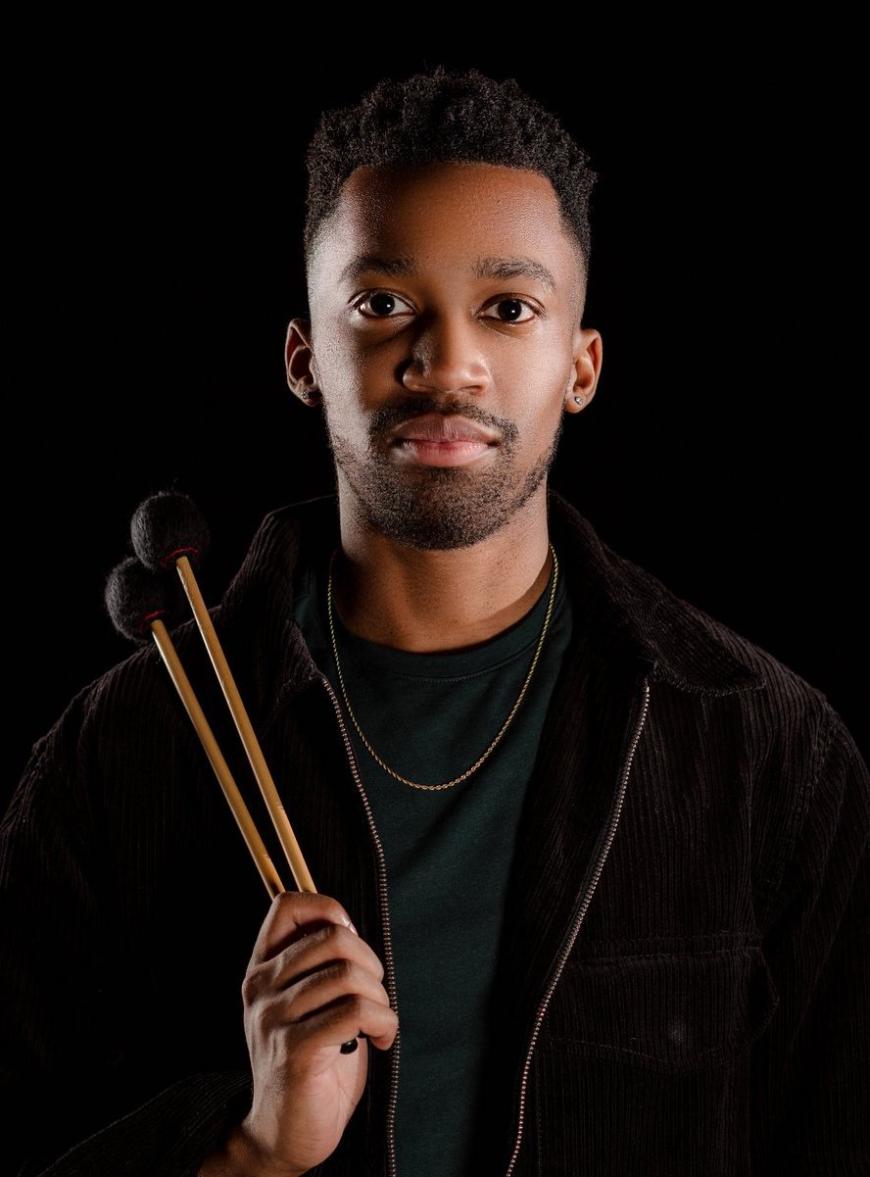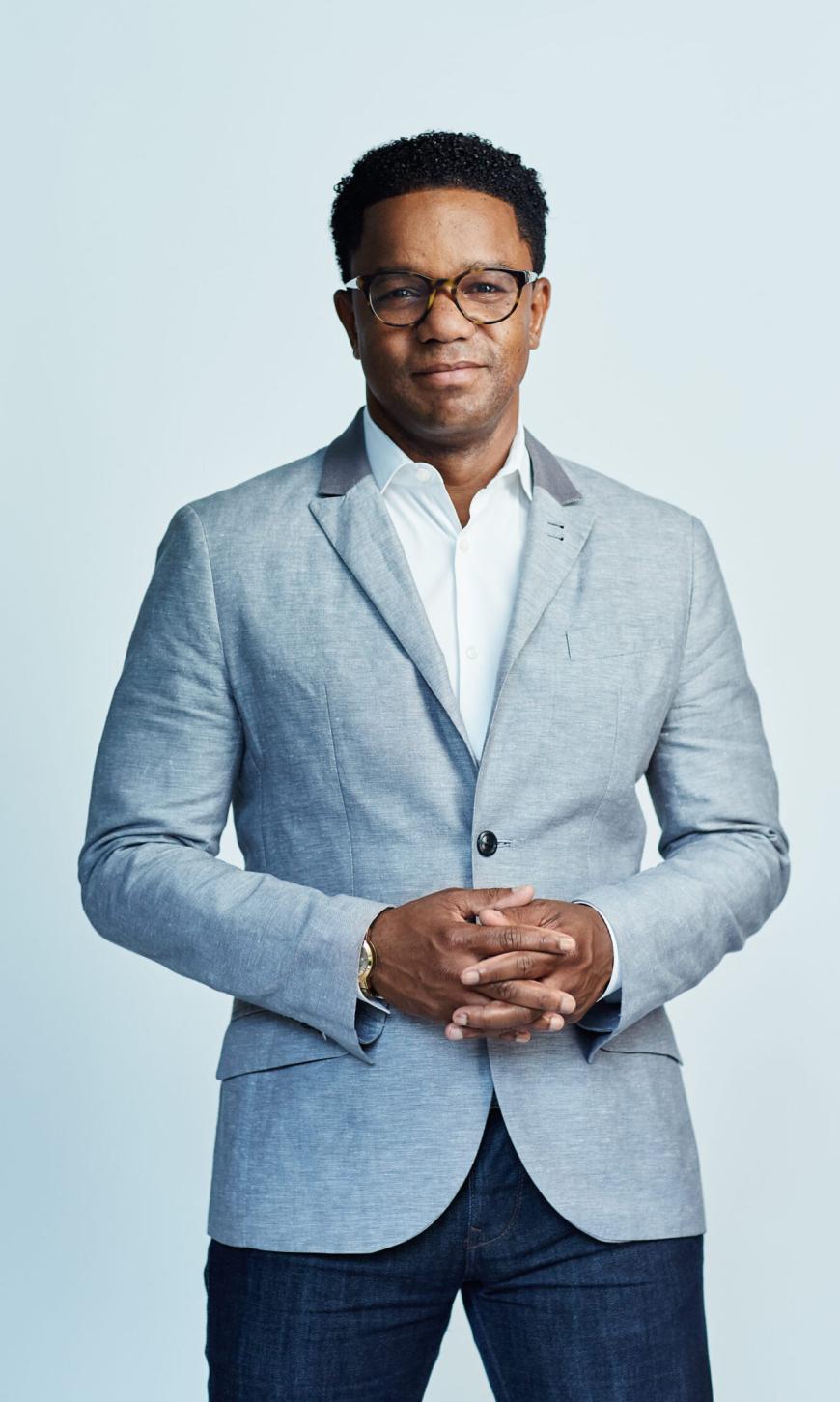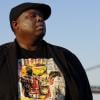
Jazz is in the midst of an unprecedented shift that can best be described as a vibes revolution.
After generations of remarkable stability, the music’s standard instrumentation is expanding, driven by a rising tide of brilliant young vibraphonists offering a very different sonic and harmonic palette than the piano (the rhythm-section mainstay often unseated by the vibes). These vibraphonists aren’t sitting around waiting for the phone to ring. They’re seizing the initiative as bandleaders and composers, making their instrument more visible than it’s ever been before.
A series of gigs around the Bay Area in the coming weeks offers a broad look at the ascending state of the vibes, starting with Jalen Baker at the Tenderloin nightspot Black Cat. The Houston native makes his Bay Area debut as a bandleader Aug. 29 – Sept. 1 with a crew of fellow alumni from Houston’s vaunted High School for the Performing and Visual Arts, including drummer Gavin Moolchan and pianist Paul Cornish (who both play on Baker’s impressive albums This Is Me, This Is Us, from 2021, and Be Still, from 2023). The group is joined by special guest Alexandria DeWalt on flute and vocals.

At 29, Baker has performed widely as a sideman with drummer Johnathan Blake (including a February run at SFJAZZ), bassist Amina Scott, and trumpeter Jeremy Pelt, one of the veteran bandleaders who’s conspicuously added a vibes chair to his group in recent years. Baker has embraced the steady flow of opportunities, “but when I was coming up in college, my mindset was that nobody hires vibraphonists, so you need to be a composer and bandleader,” he said.
He’s been on the scene long enough to play a role in changing that self-sufficient imperative while helping pave the way for vibraphonists coming up in his wake. “I see a lot of really young players who are great and might still be in college,” Baker said, noting that he’s felt embraced by the generation ahead of him as well.
“It’s a supportive community,” he said. “When I played with Johnathan Blake at the Village Vanguard a few months ago, Joel Ross texted me to tell me he was coming, and he and [fellow vibraphonists] Simon Moullier and Juan Diego Villalobos all came out. It’s an exciting time for the instrument.”
Though the same age as Baker, Ross is already an established star and the face of the vibes’ new-school popularity, with four acclaimed albums on Blue Note Records. He brings his Good Vibes band to the Blue Note Jazz Festival Napa on Aug. 30 and the Monterey Jazz Festival on Sept. 28. He’s also performing with trumpeter Peter Evans’s Being & Becoming project on Sept. 14 at the San Jose Jazz Break Room.
Another sign of the instrument’s increasing reach is the international array of New York-based talent drawn to the vibes. The Venezuelan-born Villalobos, a 29-year-old who also plays piano, has been a Black Cat regular as a sideman and leader. And the French-born Moullier, 30, is part of a vibes-centric block of programming next month at SFJAZZ, performing Sept. 22 with a quartet featuring some of New York’s most sought-after accompanists. (Moullier made a memorable SFJAZZ debut last year as a featured soloist in Terri Lyne Carrington’s multimedia production Seen/Unseen).
SFJAZZ’s Good Vibes series in the Joe Henderson Lab (JHL) opens Sept. 19 with the Orinda-reared Kyle Athayde, 36, whose prowess as a multi-instrumentalist means that some fellow musicians don’t even realize he’s an accomplished vibraphonist. But there’s no ambiguity about the musical identity of the San Francisco-reared Sasha Berliner, 26, who plays four JHL shows Sept. 20–21. She’s honed a sleek sound that combines mostly acoustic instrumentation with subtle postproduction to augment her band’s sonic depth and textural feel.
Though now based in Los Angeles, Berliner spends much of her time on the road and shares Baker’s observations about the “huge increase in people playing vibes. I think the biggest place I’ve noticed this is in colleges and summer music camps,” she said. “But when you look at the jazz scene, there are a lot of new bands with vibes at the forefront. I’m not sure why it’s more prominent now.”
In many ways, Berliner is the answer to her own query. A supple improviser who enhances many musical settings, she’s collaborated with high-profile artists such as Beck, Nicholas Payton, Christian McBride, Tyshawn Sorey, and Cécile McLorin Salvant, while also releasing several acclaimed albums as a leader. Berliner notes that the vibraphone, as a percussion instrument that cuts through the mix playing melodies, creates more space than a piano and “operates a lot more like guitar,” she said.
“The number of notes you can play is limited, and it works for a lot of different genres, pop and R&B and classical. All of that is really appealing. But the most important thing is having a really strong voice. Simon and Jalen and [vibraphonist] Chien Chien Lu, we all know each other, and nobody sounds like each other. It’s refreshing to have the vibes at the forefront of a band’s sound, and I feel like it was something that was kind of rare when I was starting.”
In the Bay Area, the vibraphone has been an essential creative vehicle for more than half a century. Even before Bobby Hutcherson (1941–2016) settled in the coastal San Mateo hamlet of Montara in the early 1970s, he was a regular presence on the San Francisco scene. As an improviser and composer, he was the most important jazz vibraphonist to emerge in the 1960s (along with Gary Burton), creating a vast body of work for Blue Note as a leader and essential sideman on dozens of classic albums. While the vibes can be an acquired taste, in Hutcherson’s hands the instrument’s metallic notes shimmered and crooned.
Randall Kline built the organization that became SFJAZZ on Hutcherson and fellow Bay Area-dwelling Blue Note giants Joe Henderson and Tony Williams. Hutcherson went on to be a founding member of the SFJAZZ Collective in 2004, giving the ensemble instant gravitas. When he left the group in 2007, Stefon Harris took over the vibes chair, a torch passing that in hindsight looks particularly apt.

Though he’s been far less visible as a player in recent years due to his work off the bandstand as an app developer, TED Talk-giving conceptualist, and professor at Rutgers University–Newark, the 51-year-old Harris provided the 21st-century model for creatively ambitious vibraphonists. Berkeley trumpeter and composer Ambrose Akinmusire, artistic director of the Herbie Hancock Institute of Jazz at UCLA, believes Harris’s influence has been undervalued. “He does not get the credit,” Akinmusire said. “Stefon, [pianist] Jason Moran, and [drummer] Eric Harland, they influenced a whole generation. A lot of these young players have clearly been studying Stefon.”
As to the vibes revolution, Akinmusire is not sure he agrees that this is a sudden development, at least not when it comes to the number of talented players. He name-checks a bevy of 40-somethings, including L.A.’s Nick Mancini and Kansas City’s Peter Schlamb, as well as San Jose native Chris Dingman and The Wee Trio’s James Westfall, who, like Akinmusire, are both graduates of the elite Hancock Institute (back when it was known as the Thelonious Monk Institute of Jazz).
“I don’t know if it’s all of a sudden,” Akinmusire said. “It’s about opportunities. In general, those guys were happy to be sidemen. Now, younger musicians are forced to be bandleaders. You’re seeing that across every instrument.”
If there’s a player who’s made the leap from accompanist to leader from Akinmusire’s cohort, it’s Warren Wolf, 44, who took over the SFJAZZ Collective’s vibes chair from Harris in 2013. A decade later, Wolf is the second-longest-serving current member of the group, which plays the opening set on the Monterey Jazz Festival’s mainstage on Sept. 27, Irvine Barclay Theatre on Oct. 12, and the SFJAZZ Center Oct. 24–27.
A multi-instrumentalist who played an array of keyboards and percussion on his 2023 album Chano Pozo: Origins, Wolf has returned to the vibes with a vengeance on his new album, History of the Vibraphone. His quintet tackles compositions by many of the instrument’s giants, from Lionel Hampton, Terry Gibbs (who’ll celebrate his 100th birthday on Oct. 13), and the San Mateo-reared Cal Tjader to Roy Ayers, Dave Samuels, and Joe Locke. Milt Jackson, the genius who ushered the vibes into the modern jazz age, is represented by “Django,” a standard by Jackson’s Modern Jazz Quartet bandmate John Lewis.
The jazz origin story of the instrument, which was invented in the 1920s and originally produced by competing companies as the vibraphone and vibraharp, is satisfyingly dramatic. In the summer of 1930, Louis Armstrong moved to Los Angeles and took over the Les Hite Band, which was rechristened as the Sebastian New Cotton Club Orchestra (after the Culver City nightclub where the group was ensconced).
On Oct. 16, 1930, Armstrong took the orchestra to NBC to record a new song by Eubie Blake and Andy Razaf, “Memories of You.” When a vibes set was discovered in the studio, drummer Lionel Hampton was prevailed upon to try it out, and his unaccompanied introduction, solo, and comping transformed what had been a rarely heard novelty into a viable lead instrument. Along with Red Norvo (who started on xylophone and marimba), Hampton made the vibes a swing-era mainstay with his exuberant soloing, but it was Jackson’s singular blues-steeped brilliance that ensured the vibes didn’t go the way of the clarinet with the advent of bebop.
Just about every subsequent jazz style, from hard bop to free jazz to fusion, has included a handful of significant vibraphonists, and there are many on the current scene I haven’t mentioned (including Steve Nelson, one of my favorite musicians on any instrument).
What’s particularly striking about the current crop is their diverse origins and the plethora of women in the mix. Among the decade’s leading vibraphonists are the Mexican-born Patricia Brennan, New York’s Nikara Warren, the Chilean-born Diego Urbano, and Taiwan’s Yuhan Su and Chien Chien Lu, who came to prominence in the band of trumpeter Jeremy Pelt. With bassist Richie Goods, Lu co-leads the group Connected, which plays Yoshi’s in Oakland on Sept. 27 and the Monterey Jazz Festival on Sept. 28.
These players are changing the map by finding work leading their own bands and by making room for the vibes in just about every corner of the contemporary scene. The fact remains that the instrument is not in steady demand like the bass, drums, or piano. It’s bulky and challenging to transport, and many venues don’t keep a house set on hand.
“It’s a specialty instrument,” Berliner said. “You might want vibes for one project but not for all. It’s a very particular sound. So committing to the instrument entails a lot more legwork, promoting yourself and creating opportunities. You have to keep yourself relevant and give people a reason to want vibes, to want you as an improviser.”
It’s a high bar that vibraphonists are meeting and beating, and they’re changing the sound of jazz.




